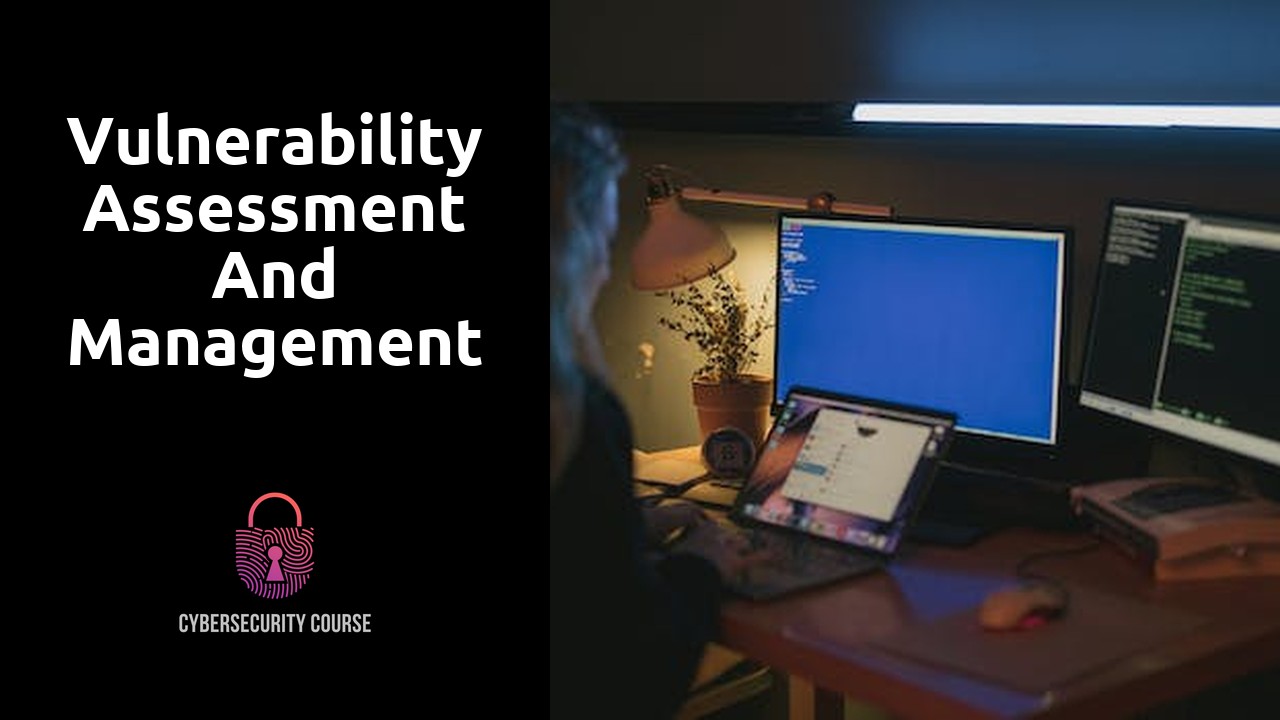
Vulnerability Assessment and Management
Table Of Contents
Uncovering Weaknesses: A Closer Look at Cybersecurity
In today's digitally connected world, cybersecurity has become a paramount concern for individuals, businesses, and governments alike. As technology continues to advance, so do the threats that lurk in the digital realm. To effectively protect ourselves and our sensitive information, we must first uncover the weaknesses within our cybersecurity measures.
One of the primary weaknesses often overlooked is the human element. No matter how sophisticated our security systems may be, they are only as strong as the individuals using them. Human error, lack of awareness, and negligence can open the door to cyber threats. Phishing attacks, for example, prey on unsuspecting individuals who may unknowingly click on malicious links or provide personal information to imposters. By focusing not only on technological solutions, but also on educating and training individuals, we can significantly strengthen our cybersecurity defenses.
Strengthening Your Digital Fortresses: The Art of Protection
As technology continues to advance, the digital world becomes increasingly vulnerable to cyber threats. Protecting your digital fortresses is no longer a luxury, but a necessity. In this era of ever-evolving cyber attacks, strengthening your defenses is an art that requires constant vigilance and adaptability.
The first step in fortifying your digital fortresses is to assess and identify potential vulnerabilities. Conduct a thorough audit of your systems and infrastructure to identify any weak points or areas that may be susceptible to attack. This could include outdated software, weak passwords, or unpatched security vulnerabilities. By proactively identifying and addressing these weaknesses, you can significantly reduce the risk of a successful cyber attack.
Cyber Threats Exposed: Identifying and Mitigating Risks
In today's interconnected world, cyber threats continue to pose a significant risk to individuals, businesses, and governments alike. Identifying these risks and implementing effective mitigation strategies has become paramount in safeguarding our digital assets. One of the first steps in this process is understanding the nature of cyber threats and the potential vulnerabilities they exploit.
Cyber threats come in many forms, from viruses and malware to sophisticated hacking techniques. They can target individuals through phishing emails or exploit weaknesses in a company's network infrastructure. By staying informed about the latest trends and techniques used by cybercriminals, organizations can proactively identify potential risks and develop strategies to mitigate them. This requires continuous monitoring, threat intelligence gathering, and the implementation of robust security measures. Additionally, conducting regular risk assessments and penetration testing can help identify vulnerabilities and weaknesses within a system, enabling organizations to take necessary steps to fortify their defenses.
Beyond Firewalls: Exploring the Depths of Vulnerabilities
In today's digital age, firewalls have become an essential component of any cybersecurity strategy. They act as a barrier between a company's internal network and the outside world, filtering out potentially harmful traffic and keeping sensitive information safe. However, as technology evolves and cyber threats become more sophisticated, it is crucial for organizations to explore beyond the limitations of firewalls and uncover the depths of vulnerabilities that exist.
While firewalls provide a certain level of protection, they are not foolproof. Cybercriminals can find ways to bypass these defenses, leaving organizations vulnerable to attacks. Moreover, firewalls are unable to detect and prevent internal threats, such as insider attacks or accidental data breaches. Therefore, to truly fortify their digital fortresses, organizations need to go beyond firewalls and adopt a multi-layered approach to cybersecurity that incorporates advanced threat detection, encrypted communications, and user behavior analytics. By exploring the depths of vulnerabilities and understanding the shortcomings of firewalls, organizations can stay one step ahead of cyber threats and protect their valuable digital assets.
The Hidden Dangers: Safeguarding Your Digital Assets
In today's interconnected digital world, safeguarding our digital assets has become more crucial than ever before. The hidden dangers lurking in cyberspace are constantly evolving, making it essential to remain vigilant and proactive in protecting our valuable information. Whether it's personal data, financial records, or intellectual property, failing to safeguard our digital assets can have severe consequences, including financial loss, damaged reputation, and even legal complications.
One of the key hidden dangers lies in the ever-present threat of data breaches. Cybercriminals are constantly looking for vulnerabilities to exploit in order to gain unauthorized access to sensitive information. From phishing attacks and malware infections to weak passwords and unsecured Wi-Fi networks, there are numerous avenues for hackers to exploit. As a result, it is imperative to implement robust security measures, including encryption, two-factor authentication, and regular security audits, to thwart potential breaches and safeguard our digital assets.
Keeping Up with the Evolving Threat Landscape
As technology continues to advance at an unprecedented rate, so too do the threats that loom in the digital landscape. Cybercriminals are constantly finding new ways to exploit vulnerabilities, making it essential for individuals and organizations alike to stay vigilant and proactive in their approach to cybersecurity.
Keeping up with the evolving threat landscape requires a multifaceted approach. First and foremost, it is crucial to stay informed about the latest trends and tactics employed by cybercriminals. This means staying updated on news and developments in the cybersecurity world, attending relevant conferences and webinars, and actively participating in online communities dedicated to sharing information and best practices. Additionally, regularly conducting risk assessments and vulnerability scans can help identify potential weak points in your digital infrastructure, allowing for targeted mitigation efforts. By investing time and resources into staying informed and proactive, individuals and organizations can better protect themselves and their valuable digital assets from the ever-evolving threats that surround us.
Related Links
Security Testing and ReconnaissanceTools and Techniques for Ethical Hacking
Case Studies in Data Breach Response and Lessons Learned
Incident Reporting and Communication in Data Breach Response
Best Practices for Data Breach Investigation and Remediation
Cybersecurity Training for Data Breach Response